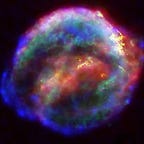Everything you need to know about JWST’s First Image
From its successful launch till now, The James Webb Space Telescope has completed many complicated steps. On July 12, NASA released its first-ever data from the telescope. Here’s everything you need to know about the release.
As the world receives its first glimpse of the complete capabilities of NASA’s James Webb Space Telescope, a collaboration with ESA (European Space Agency) and CSA, a new era in astronomy has begun (Canadian Space Agency). The telescope’s first full-color photos and spectroscopic data were made public during a live broadcast from NASA’s Goddard Space Flight Center in Greenbelt, Maryland, on Tuesday, July 12, 2022, at 10:30 a.m. EDT (14:30 UTC). The observatory’s first batch of full-color scientific photos and spectra are represented by the targets mentioned below. They also mark the official start of Webb’s general science activities.
The data are explained in the order of the release. Explore more!
SMACS 0723
The James Webb Space Telescope of NASA has created the most detailed and precise infrared image of the far reaches of the cosmos to date. This incredibly detailed image of the galaxy cluster SMACS 0723 is known as Webb’s First Deep Field. Webb’s perspective has seen the first appearance of thousands of galaxies, including the infrared universe’s weakest objects. This portion of the enormous universe fills a piece of sky about the size of a grain of sand stretched out at arm’s length.
President Joe Biden unveiled this image during a White House event Monday, July 11.
WASP- 96B
The atmosphere of a hot, puffy gas giant planet orbiting a far-off Sun-like star has been observed by NASA’s JWST to bear the unique signature of water as well as signs of clouds and haze. The observation, which relies on minute changes in the brightness of specific hues of light to infer the existence of particular gas molecules, is the most thorough of its kind to date and highlights Webb’s unmatched capacity to study atmospheres hundreds of light-years distant.
Webb’s immediate and more thorough observation represents a significant advancement in the effort to characterize potentially habitable planets outside of our solar system, even though the Hubble Space Telescope has studied many exoplanet atmospheres over the past 20 years, recording the first clear detection of water in 2013.
Southern Ring Nebula
The greatest is saved for last by certain stars. For the first time, NASA’s James Webb Space Telescope has shown that the fainter star at the center of this image is shrouded in dust. This star has been ejecting rings of gas and dust in all directions for millions of years.
The Southern Ring Nebula, also known as NGC 3132, is a planetary nebula that was recently photographed by two cameras on board the Webb space telescope. It is 2,500 light-years away, roughly.
Astronomers will be able to delve into a lot more details about planetary nebulae like this one, which are clouds of gas and dust released by dead stars, thanks to Webb. Researchers will benefit from knowing which molecules are present and where they are distributed throughout the shells of gas and dust.
Stephan’s Quintet
The holiday classic movie “It’s a Wonderful Life” has a scene that prominently features Stephan’s Quintet, a visual collection of five galaxies. Today, a new perspective on Stephan’s Quintet is provided by NASA’s James Webb Space Telescope. Webb’s greatest photograph to date, this massive mosaic spans nearly one-fifth of the Moon’s diameter. It is made up of about 1,000 different image files and has over 150 million pixels. The data from Webb offer fresh perspectives on how galaxy evolution may have been influenced by galactic interactions in the early cosmos.
Webb reveals previously unseen characteristics in this galaxy group thanks to its strong infrared vision and exceptionally high spatial resolution. The image is adorned with dazzling starburst regions and clusters of millions of newborn stars.
Gravitational interactions cause several of the galaxies to produce sweeping tails of gas, dust, and stars. The most spectacular image, taken by Webb as one of the galaxies, NGC 7318B, slams through the cluster and shows enormous shock waves.
Carina Nebula
The fringe of the neighboring, young star-forming area NGC 3324 in the Carina Nebula may be seen in this scene of “mountains” and “valleys,” which are dotted with sparkling stars. This image, which was taken by NASA’s brand-new James Webb Space Telescope in infrared light, for the first time makes visible previously hidden zones of star birth.
Webb’s allegedly three-dimensional image, known as the Cosmic Cliffs, depicts what appear to be rocky mountains on a moonlit night. The largest “peaks” in this image are the edge of the enormous, gaseous cavity of NGC 3324, which is around 7 light-years away. Strong ultraviolet radiation and stellar winds from extremely big, hot, young stars at the bubble’s center, above the nebula, have carved out the cavernous region.
You can see the replay of the live event on NASA’s youtube channel or on any of their social media. You can access their media report here.
Although it has released much data this is just the beginning. Till now there have been many updates and will definitely write another article as soon as I get enough information ;)
Explore More.
Raksita Rajagopal
